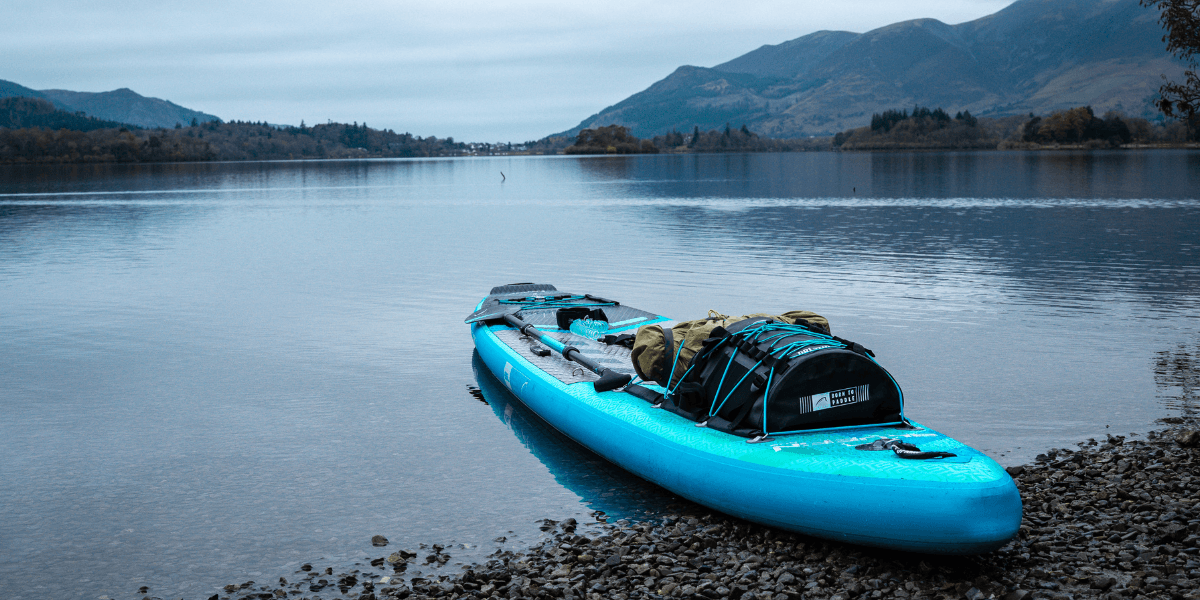Paddle boarding is a fantastic way to get out on the water and enjoy the beauty of nature but there are inherent paddle boarding safety risks involved. We decided to make this blog post regarding some most common safety risks that occurred to one of our collaborators @islanderoutdoors. He has made a Youtube Video where he shared some very useful and practical bits of advice with his audience and agreed for us to share with all of you those tips in written form. Thanks Islander Outdoors for everything you are doing!

Tip Number One – Wear your Leash
I’ve been hit by a couple of rough waves in the past and I would definitely be separated from the board if I haven’t been wearing a leash. You can use the leash that goes around your ankle, that’s the one that goes as part of our standard package. Also, another possibility is to use Releash – Quick Release Waist Leash that goes around your waist.
The board is your best flotation device so you should consider staying connected to her with the leash. If you are to be separated from your board you are relying on your PFD device (Personal flotation device). This is the second tip, you should definitely wear one of these cause it gives you added buoyancy.
One more thing to have in mind before going out on the water is that you should choose a leash based on the different environments and type of water you tend to be paddling. It is not the same if you are paddling in the moving river or on the lake. There is one great guide made by British Canoeing about different leash types and Choosing the right leash for different types of water, so check that out and be prepared for everything.
Tip Number Two – PFD device
A personal flotation device (PFD) is an essential piece of equipment for anyone participating in water activities, including paddle boarding. A PFD is a life-saving device that provides buoyancy and helps keep you afloat in the water. There are a couple of things to keep in mind.
The PFD should fit properly, a PFD that is too large or too small won’t provide the necessary buoyancy to keep you afloat. There are different types of PFDs, including inflatable PFDs, which are compact and comfortable to wear, and foam PFDs, which are more traditional and provide excellent buoyancy. If you want to learn more about it, we have a blog post specifically about that – Do I Need A Lifejacket Or A PFD When Paddling?
Tip Number Three – Weather Conditions
Everyone talks about the weather conditions but no one really gives you specifics.
If there is an offshore breeze and it is blowing me out to sea (check the video and image below) I wouldn’t be out paddleboarding, even if it was 10 miles per hour wind it’s just not worth it. Always go out with an onshore or cross-shore wind because paddle boards are very light. Think about it like this, when you’re out on a paddleboard you are like a little sail, and if you do get caught out and the weather changes just get low and paddle on your knees and you’ll make it to the shore.
Always check the weather on some free app like Windy, it shows you weather directions throughout the day and it’s normally pretty accurate.
Tip Number Four – Don’t stand up too early
Don’t try and stand up on your paddleboard until you’re probably at least head high in water. Most injuries with paddleboarding occur with people falling in. You shouldn’t be afraid of falling in, that’s quite normal, but if you fall in three-foot-deep water and you go head first… you get the message, it’s probably going to hurt. So get out to a little bit of deeper water before you try standing up.
As a general rule of thumb, you’ll see where the handles are – in the middle of the board, and that’s exactly the place for your foot placement. If there are any sort of waves coming your way from a boat that goes past, try and steer into them, you’ll want the front of the paddleboard to ride over those waves.
Tip Number Five – Take your phone with you
Bring your mobile phone with you, all Bluefin SUP paddleboards come with a little waterproof pouch that can be strapped to the front of the board. The number of people that called RNLI saying they’ve been blown out to sea is not insignificant, and the most important thing is those people have been saved. Sometimes the signal might be bad, and the gold standard is to have VHF radio but I understand that not a lot of people would have them. So, always take your phone and let people know where you are headed.
Tip Number Six – Don’t look at your feet
Don’t look at your feet when you’re trying to stand up on a paddleboard. You might think it’s the right thing to do, but it’s just going to make you fall in. Look forward pick something stationary and look at it and you’ll be a bit more natural and more stable. If you become unstable while standing up, stick the paddle in the water and hold it there, it acts like a little bit of an anchor and it really can be useful. If you want to learn more about perfecting your technique, have a look at this blog post: Working on perfecting your SUP Technique
So, whether you are planning a solo paddle or a group excursion, don’t forget about these valuable paddle boarding safety tips that can help keep you and others safe on the water.


Share:
How To Store Your Paddle Board In Winter
Swap the Gym for your SUP!